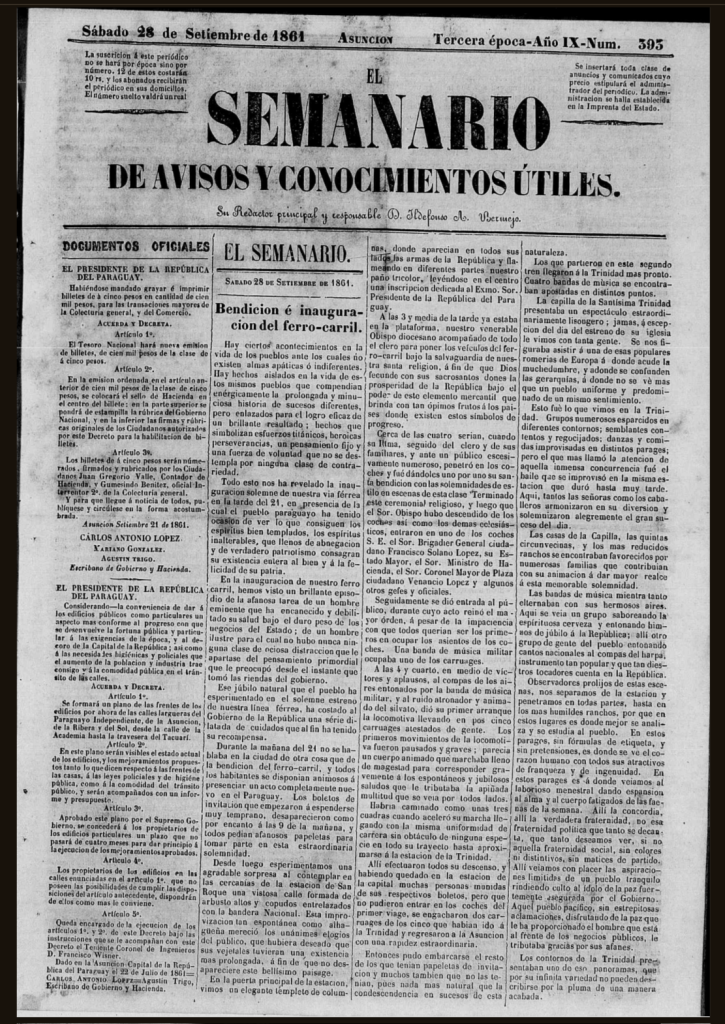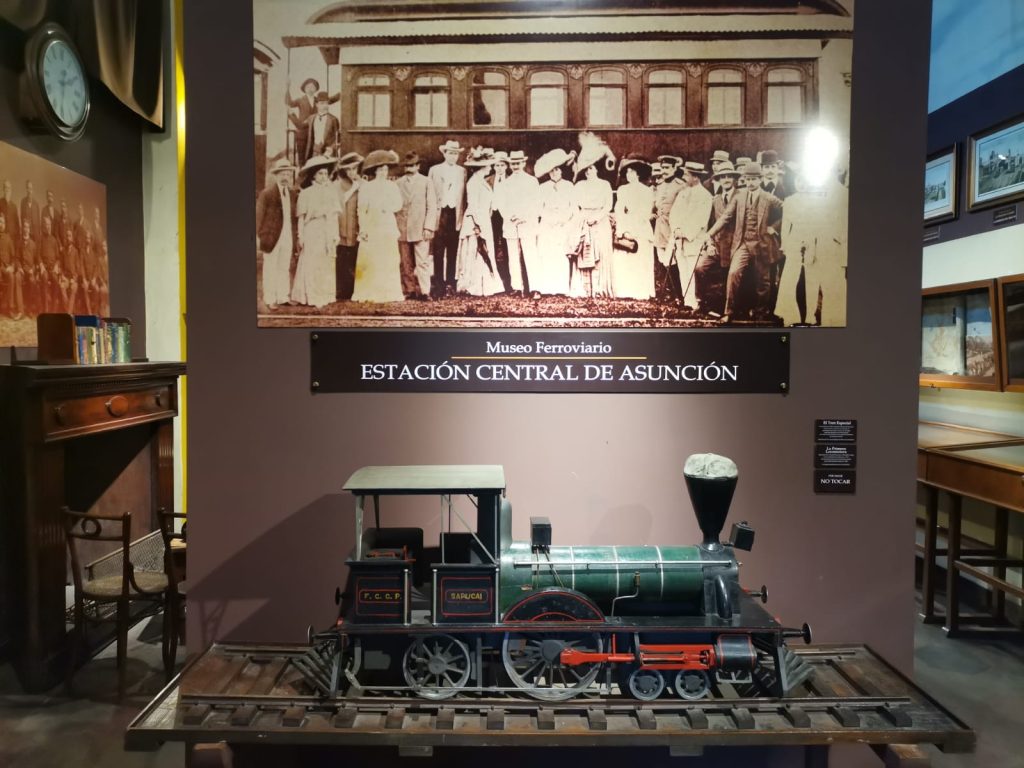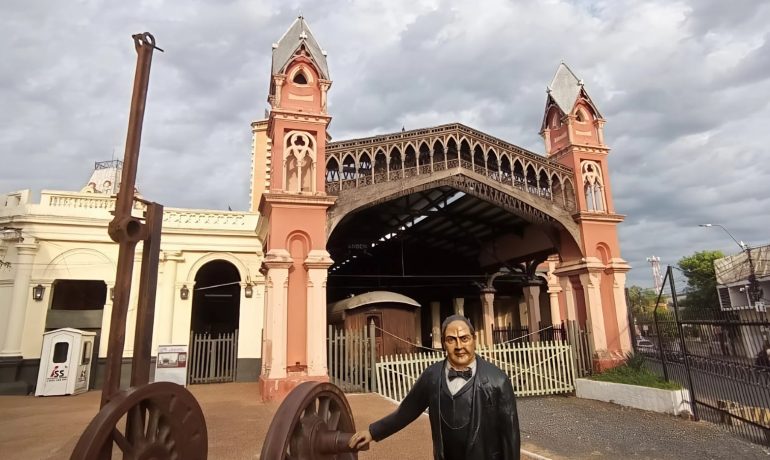This article was made by our partner MUPAPY: Voices of Museums and Cultural Heritage. This week, the article is about the Central Railway Station. Click here for the previous article about the House of Victory.
The Central Railway Station stands as a silent witness to Paraguay’s history, culture, and progress. This emblematic building, declared a National Historical Monument by Law 174/1993, was not only the country’s first railway station – it now seeks a new identity as a cultural space. Today, it houses the Railway Museum, a site that invites visitors to step into Paraguay’s 19th-century past, told through its own compelling narrative.
Beginning of the Central Railway Station

As reported in the state-run newspaper El Semanario de Avisos y Conocimientos Útiles, “There are certain events in the life of a people before which no soul remains apathetic or indifferent. There are isolated occurrences in the history of nations that powerfully encapsulate a long and detailed sequence of seemingly unrelated events, which are in fact bound together in the achievement of a brilliant outcome (…). All of this was revealed to us in the solemn inauguration of our railway line on the afternoon of the 21st.”
This took place at what was then officially called the Old San Roque Station, where Paraguay’s first official train journey departed on September 21, 1861, heading for Trinidad Station. Thanks to freely distributed invitation tickets at the Central Station’s box office, the people were able to take part in this historic moment.
Development of the railway
At the time, the railway was a landmark achievement in Paraguay’s development, symbolising a collective aspiration for modernisation and national integration – particularly vital in an era when overland transport was key. The building soon became a beacon of progress and a brighter future. It was popularly known as “San Francisco Station” due to its proximity to the square of the same name (now Plaza Uruguaya).
Paraguay’s railway system evolved through several phases, each marked by political and economic shifts. These can be broadly categorised into three main stages: the first, under state administration; the second, following the devastation of the War of the Triple Alliance (1864–1870), during which the railways – like much of the country – fell into crisis and were subsequently privatised, sold to British capitalists who operated them for decades (1861–1961); and the third, when the Paraguayan state regained control of the rail system.
By this point, however, the railway was already in clear decline. This final phase came under the name F.C.A.L. (Compañía de los Ferrocarriles del Paraguay). Eventually, service was suspended, and by the late 1990s, both the stations and rolling stock had fallen into disuse.
In response, the Paraguayan government created FEPASA S.A., the current managing entity, tasked with safeguarding the legacy of the former national railways and ultimately aiming for full privatisation of the system.
Today, the Central Station has been reborn as a cultural and educational space with the establishment of the Railway History Museum. It not only preserves collective memory but also offers visitors a unique experience to connect with the past, wandering through its exhibition halls and vintage railcars.
What is on display?

The museum displays photographs, books, and a variety of tools once used on the railway. One of the main attractions is the locomotive “Sapucai,” a gem from the early days of Paraguay’s railway. Beyond its historical and engineering significance, it stirs a sense of nostalgia for an era when steam trains symbolised cutting-edge technology, progress, and connection.
We now look back on our once-proud railway with a mix of nostalgia and frustration, aware that the hopeful future envisioned by our ancestors has yet to fully arrive. And yet, the same fundamental principle that once drove its creation remains relevant today: to prioritise the well-being of the people while advancing plans for industrialisation and sustainable urban mobility – treating public transportation as an essential service.
Central Railway Museum opening hours
Located on Eligio Ayala Street, between Mexico and Paraguarí, the museum is open Tuesday to Sunday from 9:00 AM to 5:00 PM. Entry costs Gs. 5,000 for Paraguayan residents and Gs. 10,000 for everyone else.
Monday: Closed
Tuesday: 9 AM to 5 PM
Wednesday: 9 AM to 5 PM
Thursday: 9 AM to 5 PM
Friday: 9 AM to 5 PM
Saturday: 9 AM to 5 PM
Sunday: 9 AM to 5 PM


